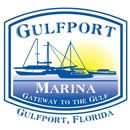From: Sarah Reynolds <Sarah.Reynolds@ccprc.com>
Date: August 25, 2025 at 1:00:00 PM EDT
To: Sarah Reynolds <Sarah.Reynolds@ccprc.com>
Subject: Trick, Treat & Trail set for Oct. 25: Family Fun Run and Festival at Wannamaker County Park
NEWS RELEASE
Public Contact: 843-795-4386 / www.charlestoncountyparks.com
Media Contact: Sarah Reynolds / (843) 762-8089 / sarah.reynolds@ccprc.com
Read this online: www.ccprc.com/newsreleases
Trick, Treat & Trail Family Fun Run and Festival on Oct. 25
Get in the Halloween spirit with a fun-filled event for the whole family!
{NORTH CHARLESTON} — Get ready for a spook-tacular time at the second annual Trick, Treat & Trail Family Fun Run and Festival! Hosted by Charleston County Parks, the event will be held on Saturday, Oct. 25, beginning at 10 a.m., at Wannamaker County Park.
The festival includes ghoulish music, trick-or-treating, jump castles, face painting, and a craft. A variety of vendors will be on site selling food and refreshments, including King of Pops, Donut Daddy, Miracle’s Tasty Express, and Sweet But Not So Sweet.
Check-in for the event and trick-or-treat bag distribution will be held from 9 a.m. – 12 p.m. at the Tupelo Shelter at Wannamaker County Park. The fun run begins at 10 a.m. The course closes for runners at 10:45 a.m. The course will re-open for trick or treating from 11 a.m. – 1 p.m. The Festival will be open for the entirety of the event 10 a.m. – 1 p.m. A costume contest will be held at 12:15 p.m. Registration includes a custom trick-or-treating bag, finisher medal, and candy.
Participants are invited to dress in costume. Prizes will be awarded for the best Halloween costume in the following age categories: Under 6, 6-8, 9-10, 11-15, 16-20, and 20 and up. Awards will also be presented for the best pet costume, best duo costume, and best group costumes of 3 or more. The costume contest will be held shortly after noon.
Admission to the race and event will be charged per vehicle of up to 15 people. Advance registration is $20 per vehicle and ends Wednesday, Oct. 23. If not sold out, registration will be available on-site for $25 per vehicle only until 12 p.m. Advance registration is recommended. Register for the event on the event webpage at https://www.ccprc.com/3715/Trick-Treat-Trail.
The fun run is open to runners and walkers of all levels, including beginners. Accessible parking and restrooms are available. The route includes a grass meadow and paved trails. This is a loop course with water stations and an optional shortcut route. Dogs are allowed at this event but must remain leashed and under control at all times.
This event is hosted by Charleston County Parks. For more information about this event and to register, please visit https://www.ccprc.com/3715/Trick-Treat-Trail or call (843)-795-4386.
Owned by the Charleston County Park and Recreation Commission, Wannamaker County Park is located at 8888 University Boulevard in North Charleston, SC (Hwy 78). The mission of CCPRC is to improve the quality of life in Charleston County by offering a diverse system of park facilities, programs and services. The large park system features over 11,000 acres of property and includes four land parks, three beach parks, three dog parks, a skate park, two landmark fishing piers, three waterparks, 19 boat landings, a climbing wall, a challenge course, an interpretive center, a historic plantation site, an equestrian center, cottages, a campground, a marina, as well as wedding, meeting and event facilities. The park system also offers a wide variety of recreational services – festivals, camps, classes, programs, volunteer opportunities, and more. For more information, call 843-795-4386 or visit www.charlestoncountyparks.com.
Charleston County Park & Recreation Commission / 861 Riverland Dr. / Charleston, SC 29412 / (843) 795-4386
|
















































































Be the first to comment!